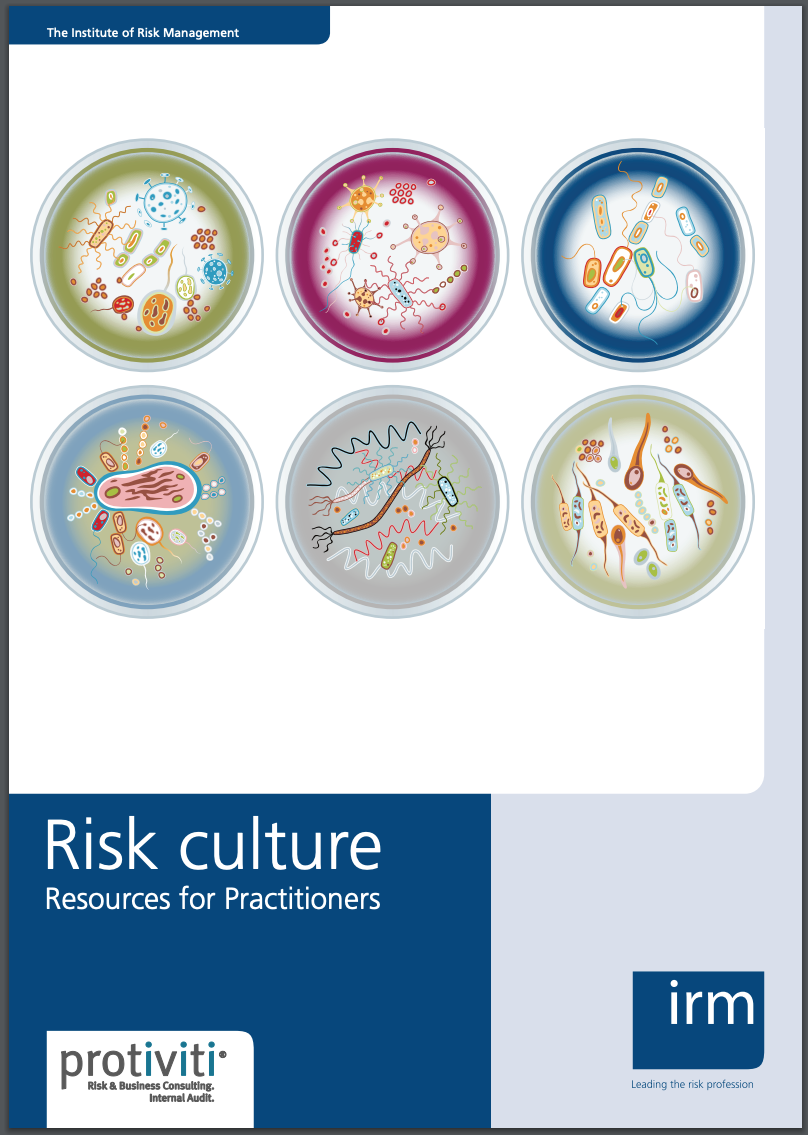Risk Culture: Resources For Practitioners
Produced in collaboration with the Institute of Risk Management (IRM) & Protiviti, this document serves as a practical guide for risk management practitioners.
Stemming from an idea conceived by the IRM Thought Leadership group in 2011, the objective of this handbook is to provide a practical guide and diagnostic tools and techniques for addressing the cultural issues involved in implementing enterprise risk management.
Introduction
The project team recognised early on that this was a rapidly developing and immature topic and that there was no general consensus on how it should be tackled. This suggested an approach whereby a series of essays exploring various aspects of risk culture would be beneficial in capturing the different facets of such a complex subject. The IRM recognised that given the scale of the topic and challenges in embracing every aspect of a complex subject, due humility should be shown in terms of what contribution such a paper could make to moving this subject forward.
The document is essentially a collection of essays by different authors on various aspects of risk culture and is aimed at risk professionals and operational management teams (as risk culture is not the sole domain of the risk professional).
The Risk Type Compass
It is possible to measure predisposition to risk by use of personality assessment tools. Their basic rationale is that, with regard to risk taking, people vary enormously. In culture building terms, the balance in risk types and their representation either across the organisation or within departments is a factor in shaping culture. A number of psychometric tools can facilitate this and one such tool, the Risk Type Compass, places individuals into one of eight Risk Types and can provide an overview of the risk landscape and the prevailing risk culture.
Download the paper by clicking the image below.
